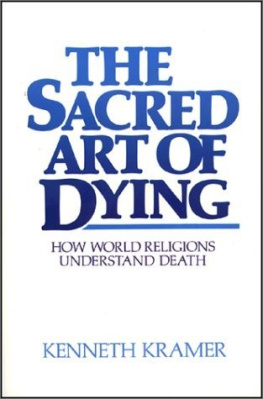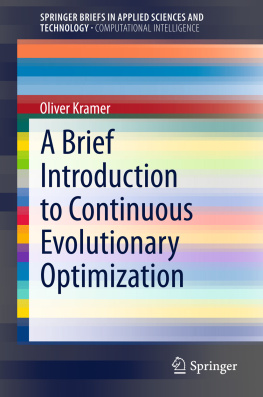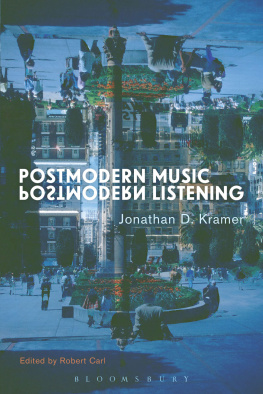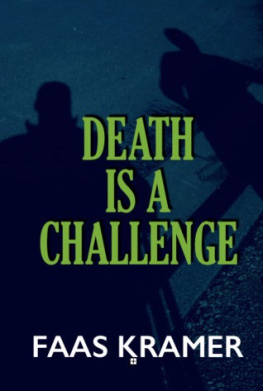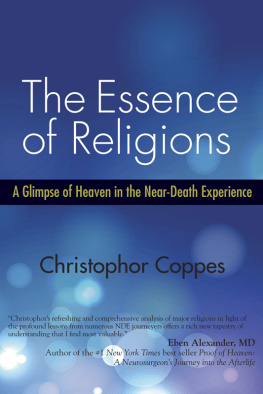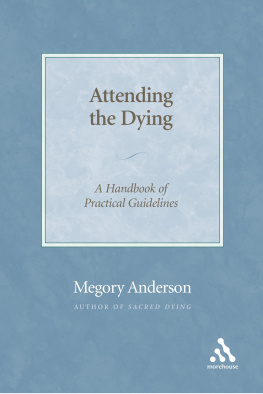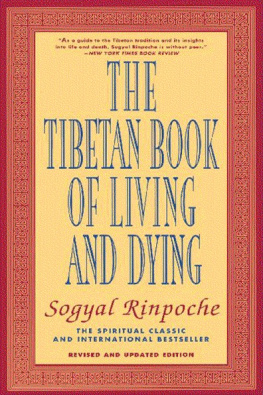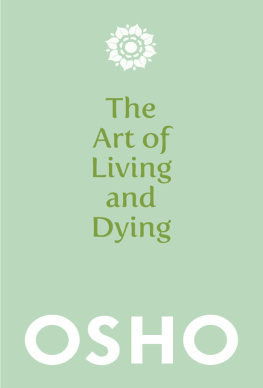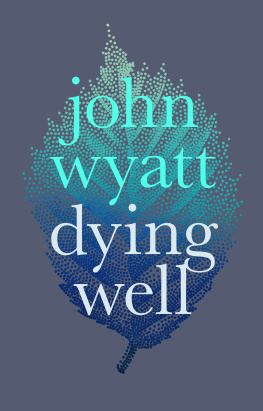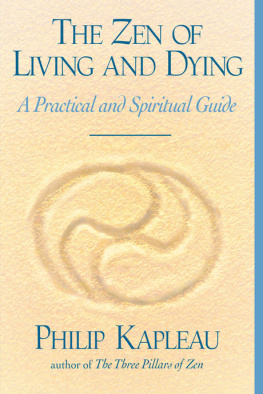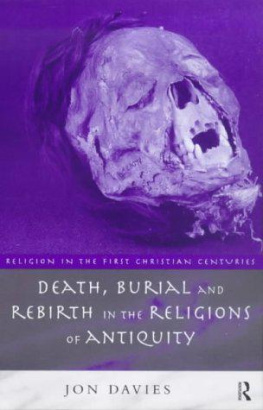Kramer - The Sacred Art of Dying: How World Religions Understand Death
Here you can read online Kramer - The Sacred Art of Dying: How World Religions Understand Death full text of the book (entire story) in english for free. Download pdf and epub, get meaning, cover and reviews about this ebook. year: 1988, publisher: Paulist Press, genre: Religion. Description of the work, (preface) as well as reviews are available. Best literature library LitArk.com created for fans of good reading and offers a wide selection of genres:
Romance novel
Science fiction
Adventure
Detective
Science
History
Home and family
Prose
Art
Politics
Computer
Non-fiction
Religion
Business
Children
Humor
Choose a favorite category and find really read worthwhile books. Enjoy immersion in the world of imagination, feel the emotions of the characters or learn something new for yourself, make an fascinating discovery.
- Book:The Sacred Art of Dying: How World Religions Understand Death
- Author:
- Publisher:Paulist Press
- Genre:
- Year:1988
- Rating:5 / 5
- Favourites:Add to favourites
- Your mark:
- 100
- 1
- 2
- 3
- 4
- 5
The Sacred Art of Dying: How World Religions Understand Death: summary, description and annotation
We offer to read an annotation, description, summary or preface (depends on what the author of the book "The Sacred Art of Dying: How World Religions Understand Death" wrote himself). If you haven't found the necessary information about the book — write in the comments, we will try to find it.
The Sacred Art of Dying: How World Religions Understand Death — read online for free the complete book (whole text) full work
Below is the text of the book, divided by pages. System saving the place of the last page read, allows you to conveniently read the book "The Sacred Art of Dying: How World Religions Understand Death" online for free, without having to search again every time where you left off. Put a bookmark, and you can go to the page where you finished reading at any time.
Font size:
Interval:
Bookmark:

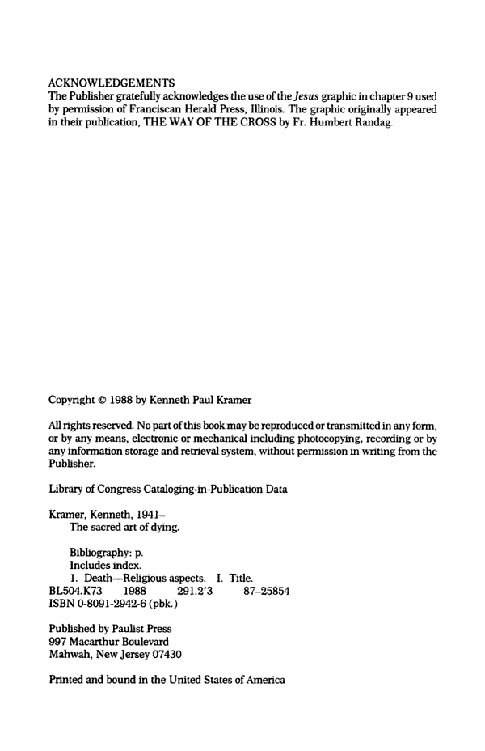
To my "only" daughters
YVONNE ROSE
and
LEILA ANN
who know already that somewhere in the distance lies the soft spread of Heaven
I have already died all deaths,
And I am going to die all deaths again,
Die the death of the wood in the tree,
Die the stone death in the mountain,
Earth death in the sand.
Leaf death in the crackling summer grass
And the poor bloody human death.
H. Hesse, "All Deaths" in Poems
PREFACE
What is the purpose of death? Does existence end at death? If not, what happens after death? Are we reembodied in a similar or in a different form? Is there a final judgment? And how are we to prepare for our own dying? Answers to questions like these not only bring meaning into life but also suggest the value of bringing the experience of death into life. In fact, one of our major themes is what can be called spiritual deatha dying before dying, Unlike physical and psychological forms of dying, which have potentially negative implications, spiritual death evokes the experience of rebirth.
The title, The Sacred Art of Dying, was selected for two fundamental reasons. First, I want to highlight the fact that from a world religious perspective, dying is a sacred art, the final ritual, the last opportunity we have to discover life's ultimate meaning and purpose. Therefore, religious traditions ritualize the death process to remind us of the impermanence of life, and that whatever lies on the other side of death is as real, if not infinitely more so, than life itself. These rituals offer mourners a sense of victory over death, a way to dance on the dome of death.
Second, I want to emphasize that dying is a sacred art. Speaking about loving in theory and practice, Erich Fromm in The Art of Laving writes that living itself is an art, and that if we want to learn how to live and love we should proceed in the same way we would if we wanted to learn any other art. In this text we will speak in a similar fashion about death, for to see death as a sacred art involves both dying and being reborn together, and in an altogether new way. As the reader will discover, each of the sacred traditions represented in this text teach practitioners how to die artfully, not only before dying, but at death. Each tradition affirms that one must discover how to outlive the end of the world, while yet alive, so that all fears of death die. In this sense, dying becomes one of the greatest arts of life, and one of the most difficult to cultivate.
Distinct from most books in the field, The Sacred Art of Dying presents the story of death in its comparative religious context. Whereas many texts focus on psychological questions, sociological case studies, health care systems, medical ethics, the structure of wills, and sundry death issues (e.g., suicide, abortion, the death penalty, and the nuclear shadow), this text focuses primarily on religious attitudes toward death, dying and afterlife. What do Hindus, Buddhists and the Chinese do about death? What do they believe happens after death? How do Jews, Christians and Muslims approach death? How do they prepare for death?
To address these questions, I introduce primary source materials and pertinent sacred texts from each tradition studied. In Chapter 1, images of physical, psychological and spiritual death are explored in literature and scripture. In Chapters 2-12, comparative religious attitudes toward death and dying are set forth. Each chapter in this cluster includes a story or stories which are central to each tradition, conceptual teachings about spiritual death and afterlife, and death rituals. Together, these three form a dynamic constellation which crystallizes each tradition's views. In Chapter 13, eastern and western viewpoints on death are presented through their creation stories. The eastern view of reincarnation is juxtaposed with the western view of the resurrection of the body. Chapter 14 then explores a common factor in each tradition studieda self-surpassing death-and-rebirth experience. This chapter is especially significant for those who seek to be freed from the fear of dying.
Emerging from this structure is a fundamental assumption of the text to be fully ready to die, a person must develop firm convictions about the dying process as well as practical methods for dying in a sacred way. Whereas culturally death is perceived as an anxiety-producing threat to human existence, it will be our purpose to demonstrate that the sacred traditions view death transformationally. At the same time, it is my hope that readers will become better prepared to face their own death experience and perhaps begin to develop a fearlessness in its face.
When asked for whom the book was written, I have typically replied that I had in mind at least two audiences: the university student who is probably taking a course in Death and Dying, and the non-matriculated student who for various personal reasons is seeking answers to death-related questions. It occurs to me now that there is also a third audience, anyone who experiences the inevitable vicissitudes of grief in response to loss (e.g., of a relationship, or of a job) and who wishes to be free from its associated fears and anxieties.
I have written therefore as simply as I possibly could while yet at the same time preserving the structural integrity and cultural pluralities endemic to the subject. This explains why there is no attempt here to be pedantically comprehensive. Rather, I have chosen a more evocative style to help readers become more deeply involved with the text.
I am aware that for some readers my method of re-presenting the central stories, teachings and rituals of the so-called world religions (drawn from their sacred texts) may appear, from a social-scientific point of view, naive. or, from a phenomenological point of view, overly-Western and idiosyncratic. At the same time I am aware that from the students' point of view, the method of narratively and textually introducing comparative world views on the death process is educationally catalytic. And it is for students that this book is written, for the student in all of us who still has much more to learn and who, therefore, is now eager to proceed.
I would like to acknowledge the following people for their invaluable help along the way: my father who says, "Why death? I'd rather live" and my mother who continues to smile within in spite of it all; my teachers, especially Bernard Phillips who first sensitized me to the integral and necessary connection between the sacred and the creative, Maurice Friedman who first introduced me to the connection between personal life and the life of dialogue, the Community of the Holy Trinity who first exposed me to monastic contemplation and whose on-going trinitarian brotherliness inspires me as I am brought face-to-face with death, and Elisabeth Kubler-Ross who reawakened for me the transcendent significance of the dying process in a presentation at Monterey, California entitled "Life and Transitions"; Professor J. Benton White, Coordinator, Department of Religious Studies, San Jose State University, for hiring me in the first place and for reading a portion of the manuscript; Professor Richard Keady who initiated the "Death, Dying and Religions" course at San Jose State and who first introduced me to the caring work done by the "Center for Living with the Dying"; my students whose questions and challenges help sharpen hazy expressions and who make me laugh at myself in the process; all who read portions of the manuscript including Stephen Voss, Ved Sharma, George Moore, Christian Jochim, Mishael M. Caspi, Noel King and Alan Leventhal; Earl Leeke Jr. and Brother William McKinley who made many stylistic suggestions from which the reader will necessarily benefit; Maria Mendenhall whose diligent and creative editing of the entire manuscript renewed the face of the text; Nora Jamison-Danko who diligently prepared the index; Kathy Cohen, Project Director of the "Paths to the Present" Program at San Jose State, who invited me to assemble a slide-illustrated module "Creation and Death: Eastern and Western Traditions" which became Chapter 13; the "International Society for Philosophy and Psychotherapy" at whose first annual meeting in October of 1986 I presented the material in Chapter 14; the American Academy of Religion at whose Western Regional Convention in April 1987 I presented "The Three Faces of Death" which became Chapter 1; Geoff Norman for his sensitive graphics; Douglas Fisher, my editor, and Paulist Press for their support; and the anonymous student who looked into my eyes and said: "Thanks for teaching me how to die!"
Font size:
Interval:
Bookmark:
Similar books «The Sacred Art of Dying: How World Religions Understand Death»
Look at similar books to The Sacred Art of Dying: How World Religions Understand Death. We have selected literature similar in name and meaning in the hope of providing readers with more options to find new, interesting, not yet read works.
Discussion, reviews of the book The Sacred Art of Dying: How World Religions Understand Death and just readers' own opinions. Leave your comments, write what you think about the work, its meaning or the main characters. Specify what exactly you liked and what you didn't like, and why you think so.

